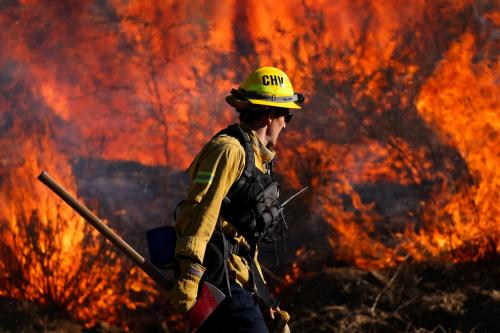Over the past decade, peacekeeping forces have come to play critical roles in humanitarian emergencies around the world. No longer strictly confined to “traditional” peacekeeping roles in which military forces monitor cease-fires between nations and use force only in self-defense, today’s peacekeepers are thrust into the midst of civil wars and called upon to protect the civilian population, among them internally displaced persons (IDPs), who have been uprooted from their homes and often are the targets of abuse.
A study by William G. O’Neill, entitled A New Challenge for Peacekeepers: The Internally Displaced, supports “modern peacekeeping,” in which military forces become involved in protecting civilians, assisting in humanitarian aid efforts, and engaging in police-like tasks to assure public security. In the author’s view, the facts on the ground make this essential. Although some humanitarian groups are often uncomfortable with the notion of sharing information with the military, the author argues that “no peace operation, humanitarian assistance or human rights monitoring can succeed unless all involved actively gather and share information.”
The report examines the evolution in military training and doctrine that has taken place internationally. It identifies the “good practices” or protection strategies that have emerged in different military operations, including in Kosovo, the Democratic Republic of the Congo, and Liberia, while pointing out that the mandates of military forces and civilian police for protecting civilians are often ambiguous, the training and resources made available to them insufficient, and the deployment of troops far too slow. There are also gaps between the protection mandates assigned to peacekeepers and the weaker guidance provided to them by the United Nations. Abuses committed by peacekeepers against displaced populations, most notably women and children, are noted as well.


